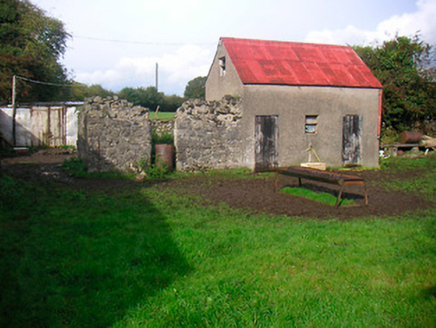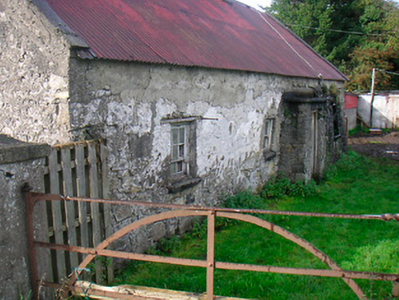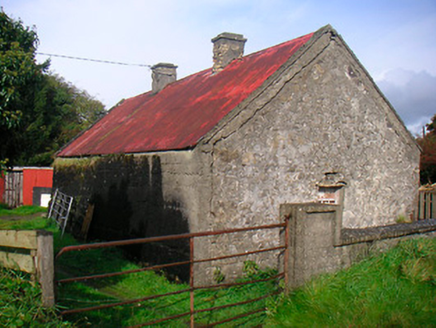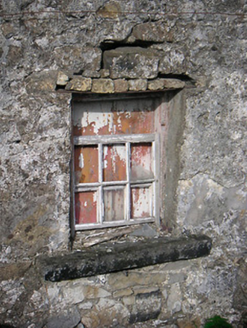Survey Data
Reg No
15401908
Rating
Regional
Categories of Special Interest
Architectural, Technical
Original Use
House
Date
1750 - 1850
Coordinates
248155, 255920
Date Recorded
13/10/2004
Date Updated
--/--/--
Description
Detached four-bay single-storey vernacular house, built c.1800, with flat-roofed windbreak porch to centre of main elevation (east). Now derelict and uninhabited. Pitched corrugated-iron roof, formerly thatched, having cement rendered brick chimneystacks and raised concrete verges to either end (north and south). Rubble stone construction with sections of remaining lime render and recent cement render over. Square-headed window openings with timber lintels and cut stone sills having remains of six-over-three and two-over-two pane timber sliding sash windows. Blank façade to rear (west). Square-headed door to projecting porch with timber sheeted door. Set back from road (at right angle) with cement rendered two-bay single-storey outbuilding with corrugated metal roof to the northeast, c.1900. Bounded on road frontage by rubble stone boundary wall (south). Rendered gate piers and wrought-iron gate to south. Located along rural road to the northeast of Mullingar.
Appraisal
An appealing small-scale vernacular house of picturesque appearance, which retains its early character despite its now derelict condition. It retains some characteristic features of the Irish vernacular tradition, including the windbreak porch, rubble stone construction with lime render over, the small window openings and the blank rear façade. It is aligned at a right angle to the road, which is also a typical feature of buildings of this modest nature. The steeply pitched roof suggests that this building was originally thatched. Buildings of this modest type and form were once a ubiquitous feature of the Irish countryside but are now becoming increasingly rare. The related outbuilding, the wrought-iron gate, the boundary wall and the water pump all contribute to the setting of the composition, which remains an integral element of the architectural heritage of Westmeath.







